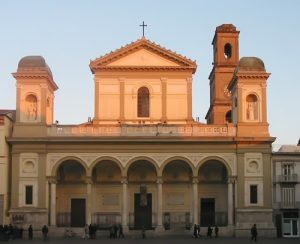The small city of Nola, located in the Campania region of Italy, may not be as well-known as its neighboring cities of Naples, Pompeii, or the Amalfi Coast, but it has its own unique charm that is worth exploring. From its rich history, stunning architecture, vibrant culture, and delicious food, Nola has a lot to offer to travelers who are seeking an off-the-beaten-path destination in Italy.

Nola dates back to ancient times, and it was originally inhabited by the Oscans, an Italic people who settled in the area around the 8th century BC. Later on, the city was conquered by the Greeks, the Romans, and the Normans, among others, each leaving their own mark on Nola’s history and culture.
One of the main attractions of Nola is its historic center, which is filled with impressive churches, palaces, and museums. One of the most notable landmarks is the Cathedral of Nola, dedicated to the city’s patron saint, Paulinus of Nola. The cathedral dates back to the 12th century and features a beautiful Baroque façade and an ornate interior adorned with frescoes and sculptures.
Another must-see attraction is the Palazzo dei Vescovi, a magnificent palace built in the 18th century for the local bishop. The palace features a stunning courtyard with a fountain, as well as elegant rooms decorated with frescoes, stucco, and antique furniture.
One of the unique features of Nola is its tradition of the “Festa dei Gigli,” a colorful festival held every year in honor of Saint Paulinus. During the festival, which takes place in June, giant wooden structures shaped like lilies are carried through the streets by groups of men, accompanied by music and dancing. The festival is a spectacle to behold and attracts visitors from all over the world.
Food is also a highlight of Nola’s cultural offerings. The city is famous for its pizza, which is often made with local buffalo mozzarella and other fresh ingredients. Another local specialty is the “sfogliatella,” a shell-shaped pastry filled with ricotta cheese, candied fruit, and cinnamon. Foodies should also make sure to try the local wine, made from the Aglianico grape, which is known for its full-bodied flavor and deep red color.
For those who want to explore Nola’s natural surroundings, the nearby Mount Vesuvius is a popular destination. The volcano, which famously destroyed the nearby city of Pompeii in 79 AD, offers hiking trails with stunning views of the Bay of Naples and the surrounding countryside. Visitors can also take a guided tour of the volcano and learn about its history and geology.
In conclusion, Nola is a hidden gem of Italy that is definitely worth a visit for those who want to experience the country’s history, culture, and cuisine in a less crowded and touristy destination. From its impressive architecture and rich traditions to its delicious food and natural wonders, Nola has something to offer to every traveler.
Trivia: Did you know that Nola is also famous for its production of “coral jewelry”? The tradition dates back to the 19th century, when local artisans began using coral from the nearby seas to create intricate and colorful pieces of jewelry. Today, Nola’s coral jewelry is still sought after by collectors and fashionistas around the world.
